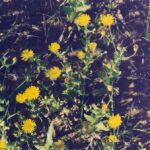| Common Name: |
Camphor |
| Botanical Name: |
Cinnamomum camphora syn. Laurus camphora |
| Genus: |
Cinnamomum |
| Family: |
Lauraceae |
| Native Location: |
China, Japan, Taiwan, tropical SE Asia |
| Cultivation: |
Moist, well-drained soil in sun or partial shade. Trees tolerate coppicing. |
| Propagation: |
By seed sown when ripe at 13-18°C (55-64°F); by semi-ripe cuttings in summer. |
| Harvest: |
Leaves of the C. camphora are picked as required; wood is cut from trees over 50 years old and boiled to extract camphor, which is steam-distilled for oil or use in infusions, liniments, powder, and other medicated preparations. Bark of C. cassia is dried in quills without fermentation for use in infusions, powder and tinctures; branches and leaves are distilled for oil. Unripe fruits of C. cassia are picked in summer and dried as cassia buds. Shoots of coppiced plants of C. zeylanicum are cut every second year during the rainy season, and stripped of leaves for distillation. The bark is left 24 hours to ferment; outer bark is then scraped away to expose inner bark, which is peeled and dried for use, whole or powdered, in infusions and tinctures, or distilled for oil. |
| Height: |
12-30m (40-100ft) |
| Width: |
5-12m (15-40ft) |
| Hardiness: |
Min. 10°C (50°F). Withstands an occasional fall in temperature to 0°C (32°F). |
| Extraction: |
Steam Distillation |
| Parts Used: |
Wood and leaves (zhang nao), from which a crystaline camphor extract is prepared. |
| Color and Odor: |
The essential oil is colorless with a fresh and pungent aroma. |
| Background: |
Camphor trees were planted in Taoist and Buddhist temples throughout China. Camphor was also valued in India. It was used in Europe for the late seventeenth century. The therapeutic properties of camphor were studied thoroughly by Samuel Hahnemann, the founder of homoeopathic medicine. |
| Properties: |
Antiseptic, analgesic, respiratory and circulatory tonic, stimulant, nerve sedative, antispasmodic, anti-inflammatory, rubefacient.
A bitter, strongly aromatic herb that stimulates the circulatory and nervous systems, reduces inflammation, and relieves pain and spasms. It also benefits the digestion and destroys parasites. |
| Medicinal Uses: |
Externally in liniments, for joint and muscle pain, balms for chilblains, cold sores, chapped lips, and as an inhalant for nasal and bronchial congestion: in traditional Chinese medicine, for skin diseases, wounds, and as a stimulant in unconsciousness; in aromatherapy, for digestive complaints and depression. Internally, in Ayurvedic medicine, for bronchitis, asthma, sinusitis, eye complaints, epilepsy, painful menstruation, gout, rheumatism, and insomnia. Excess causes palpitations, vomiting, convulsions, and death; it may be absorbed through the skin, causing systemic poisoning. |
| Uses: |
- Respiratory System—Stimulates respiration, clears congested lungs and eases breathing. It also speeds recovery from colds.
- Muscular System—Helpful with stiff muscles and eases rheumatic aches and pains.
- Emotions—Camphor has a very balancing effect, dispelling apathy and daydreaming. Lessens strong sexual urges.
|
| Planet: |
The Moon |
| Element: |
Water |
| Magical Properties: |
Purification, Physical Energy, Celebacy |
| Blends: |
| RESPIRATORY |
MUSCULAR |
EMOTION |
| Camphor 6 |
Camphor 6 |
Camphor 5 |
| Pine 3 |
Ginger 4 |
Bergamot 3 |
| Myrrh 3 |
Coriander 3 |
Chamomile (M) 2 |
| Warning: |
This herb, especially in the form of camphorated oil, is subject to legal restrictions in some countries. |
| Bibliography: |
Aromatherapy Blends and recipes by Franzesca Watson Copyright © 1995 Thorsons, Harper Parker Publishing Inc. Pp 70-71
Magical Aromatherapy by Scott Cunningham Copyright © 1989 Llewellyn Publications, Inc. pp.65-67
The Encylopedia of Herbs by Deni Brown Copyright © 1995, 2001 Dorling Kindersley Limited. pp.169-170 |
|

